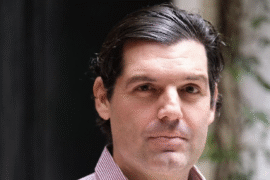This article may contain references to products or services from one or more of our advertisers or partners. We may receive compensation when you click on links to those products or services. Nonetheless, our opinions are our own.
The information presented in this article is accurate to the best of our knowledge at the time of publication. However, information is subject to change, and no guarantees are made about the continued accuracy or completeness of this content after its publication date.
Modern work culture often prizes efficiency over humanity. We’re pushed to streamline, optimize, and automate—until the day feels more like a checklist than a lived experience. But the solution doesn’t always lie in massive structural changes or expensive wellness initiatives. Sometimes, it’s the small cultural shifts—the micro-decisions teams make every day—that make the biggest difference.
Whether it’s how we celebrate success, personalize our space, or manage our time, subtle changes can add up to a more engaging, human way of working. Below are several practical, low-lift ways to bring personality and rhythm back into the workday without sacrificing productivity.
Celebrate Small Wins
In many workplaces, recognition is reserved for promotions, anniversaries, or major achievements. But what about the smaller victories—the ones that get you through the day? Solving a tricky bug, drafting a solid proposal, or even figuring out how to use the office scanner should count for something.
Celebrating these moments creates natural breaks in the day and acknowledges the effort that goes into the output. A custom emoji reaction, a Slack shoutout, or a few minutes of off-topic conversation in a meeting is often all it takes. The key isn’t in the size of the reward—it’s in the recognition itself.
Teams that adopt this habit tend to build more supportive cultures, where momentum is maintained by shared enthusiasm rather than pressure alone. It’s about saying, “We see you,” even when the task isn’t headline-worthy.
Personalize the Space (and the Experience)
It’s hard to feel inspired when you’re working in a space that looks like it was copied and pasted from a corporate handbook. Personalization doesn’t just make your environment more comfortable—it makes it yours. Photos, colors, playlists, and even the kind of chair you sit in can impact mood and performance.
This shift isn’t limited to physical workspaces either. Remote teams are embracing it through flexible scheduling, tool choice, and collaborative culture. Having control over your work environment sends a clear message: you’re not just a cog in the machine.
The same logic applies to digital systems that make work more efficient and intuitive. Consider the online gaming space, where personalization and flexibility are expected. Players choose platforms that reflect their needs—speed, ease, and trust. For instance, casino platforms offering same-day transfers aren’t just innovating for convenience—they’re responding to users who expect immediacy and transparency. Workplaces that follow suit by personalizing tools and reducing friction tend to feel more human and responsive.
Voted "Best Overall Budgeting App" by Forbes and WSJ
Monarch Money helps you budget, track spending, set goals, and plan your financial future—all in one app.
Get 50% OFF your first year with code MONARCHVIP
Set the Mood with Music and Movement
Music can radically change how work feels. It can soothe, energize, or sharpen your focus depending on the task. Some offices use background playlists, while others allow employees to curate their own. Remote workers might opt for ambient noise, lo-fi beats, or genre-themed days to break the routine.
Beyond sound, physical movement is another easy win. Standing desks, quick walks between meetings, or stretch breaks during longer calls don’t just help your body—they reset your brain. Even changing locations during the day can introduce a sense of flow.
These practices don’t require sweeping policy changes. Just a little permission. When teams are allowed to shape their own rhythm, they tend to discover patterns that enhance, rather than interrupt, their productivity.
Make Slack Part of the Workflow
When every moment is packed, people burn out. Yet many workplaces still cling to schedules that leave no margin for pause. Building in slack time—blocks without meetings, optional check-ins, or even just a 15-minute gap between calls—gives people the freedom to recharge, reflect, or realign.
This isn’t about encouraging people to work less. It’s about trusting them to manage their own pace. In high-output environments, the best work often comes when people are allowed to step back and think.
Organizations exploring four-day weeks or asynchronous communication are already proving that this approach doesn’t hurt output—it improves it. Work becomes more intentional. Teams stop spinning their wheels and start moving with purpose.
Creating slack is especially important in knowledge-based roles where cognitive load is high. It also shows employees that their time and energy are valuable, not just their deliverables.
Rethink Rituals and Reimagine Routine
Meetings, check-ins, status reports—they’re all meant to keep things moving. But when rituals become automatic, they lose their usefulness. It’s worth asking regularly: does this format still work for us?
Maybe your team replaces the daily stand-up with asynchronous updates, or swaps the Monday meeting for a shared memo. Maybe you add space in meetings for non-work-related highlights, like favorite books or weekend stories. These moments build connections and allow people to show up more fully.
Even long-standing practices, such as onboarding, training, or all-hands calls, benefit from a refresh. Include real-life anecdotes. Use visuals instead of slides. Let newer voices present. When people feel like the content reflects who they are, not just what they do, they’re more likely to engage with it.
Small tweaks like these break the cycle of monotony. They remind everyone that the work isn’t just about consistency—it’s also about creativity.
Give People More Than a Job Description
At the core of most successful culture shifts is one big idea: trust. When employees are treated like real humans instead of just roles, they rise to the occasion. That might mean letting someone try a new method for solving a recurring problem, giving them space to develop side projects, or simply asking their input before launching a new internal tool.
Work that feels robotic often stems from overly rigid systems—task lists with no flexibility, communication protocols that discourage spontaneity, or metrics that reward output over impact. Changing that doesn’t require dismantling the system. It just means building in room for people to shape their own work.
Some teams have started hosting internal “maker hours” where employees can work on passion projects related to the business. Others run internal demo sessions where anyone can present something they built or learned. These aren’t major overhauls—they’re lightweight, permission-giving moves that say: “This is your space, too.”
Even offbeat ideas can spark creativity, whether it’s turning a leftover whiteboard into an art wall or exploring creative and unexpected ways to use a dollar bill as part of a team-building exercise. When people feel invited to bring their curiosity to work, the environment naturally becomes more human and inventive.

Reviewed and edited by Albert Fang.
See a typo or want to suggest an edit/revision to the content? Use the contact us form to provide feedback.
At FangWallet, we value editorial integrity and open collaboration in curating quality content for readers to enjoy. Much appreciated for the assist.
Did you like our article and find it insightful? We encourage sharing the article link with family and friends to benefit as well - better yet, sharing on social media. Thank you for the support! 🍉
Article Title: Small Cultural Shifts That Make Work Feel Less Robotic
https://fangwallet.com/2025/06/11/small-cultural-shifts-that-make-work-feel-less-robotic/The FangWallet Promise
FangWallet is an editorially independent resource - founded on breaking down challenging financial concepts for anyone to understand since 2014. While we adhere to editorial integrity, note that this post may contain references to products from our partners.
The FangWallet promise is always to have your best interest in mind and be transparent and honest about the financial picture.
Become an Insider

Subscribe to get a free daily budget planner printable to help get your money on track!
Make passive money the right way. No spam.
Editorial Disclaimer: The editorial content on this page is not provided by any of the companies mentioned. The opinions expressed here are the author's alone.
The content of this website is for informational purposes only and does not represent investment advice, or an offer or solicitation to buy or sell any security, investment, or product. Investors are encouraged to do their own due diligence, and, if necessary, consult professional advising before making any investment decisions. Investing involves a high degree of risk, and financial losses may occur including the potential loss of principal.
Source Citation References:
+ Inspo
There are no additional citations or references to note for this article at this time.












































